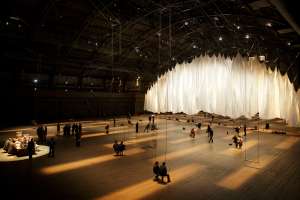Abstract
The sustained impact of the two volumes of Capitalism and Schizophrenia (1972, 1980) might be said to derive not just from the radically counterintuitive yet compelling claims that Gilles Deleuze and Félix Guattari make across hundreds of pages, upsetting pretty much any and all previous understandings of desire, language, matter, the body, sociality, the state, et cetera. The work’s impact derives as well from the way that—in the midst of their frenetic presentations and the abstract coordinates of their topographies and geologies, the plateaus and phyla, the strata and parastrata—they summon memorable materializations to clarify elusive points. Thus, in A Thousand Plateaus, the difference between the game of chess and the game of Go clarifies the distinction between the state and the war machine, between hierarchically coded identities and “elements of a nonsubjectified machine assemblage,” between institutionalized warfare and war without battle lines, between polis and nomos (352–53).
Ours is a collective experiment in sensing how artists, artifacts, and artifactual genealogy differently animate Deleuze and Guattari’s own material exemplifications. That animation has some awkward effects: it tangles orienting binaries; it questions implicit hierarchies; it exposes fragments of various histories—art histories, literary histories, philosophical histories, material histories—that have provoked us to think differently about some of the philosopher-analyst duo’s most basic concepts. Our point is not to “read” artworks as illustrations of the rhizomatics of A Thousand Plateaus. Rather, we mean to precipitate the reading of a canonized “theoretical text” that is informed by aesthetic objects—the work and the words of Ann Hamilton, Joseph Beuys, and Robert Morris, among others—and catalyzed by two object-forms that appear in the penultimate chapter (14) of A Thousand Plateaus: fabric and felt.


